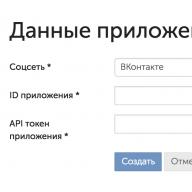In this article, we will go through the three steps in detail:
- Setting up site visitor tracking.
- Creating audiences to which we will direct our advertising
- How to properly set up an advertising campaign.
Add a remarketing code to your site
To collect lists of users who have been on your site, you can install the Google AdWords remarketing tag and use a modified Google Analytics code.It is best to use two options at once. This will allow you to create user audiences in both systems in the future.
1.1 How do I add a remarketing tag to Google AdWords?
First you need to go to Google Adwords and click on the “Shared Library” - “Audiences” tab.
In the menu that opens, click on the "Set up remarketing" button. If you are going to create only a regular remarketing campaign, then uncheck the "Use dynamic ads" box.

In the window that appears, you are prompted to add send the code and instructions to the mail. Usually it is worth indicating the mail to your programmer or the person who is involved in the site.

To copy the remarketing code, click on the link “View AdWords tag for websites”

Now you need to paste this code on all pages of the site between the tags
.
1.2. How to set up remarketing in Google Analytics?
If you set up remarketing with Google Analytics, this gives you some benefits:
- You can work more flexibly with audiences. In the settings you will have access to the behavior of people on the site and their goals achieved
- You can create remarketing audiences using ready-made templates from the Solution Gallery

Now we need to go to the remarketing settings and enable the slider. Then we save the changes.
If you installed Google Analytics using Google Tag Manager, then you can enable data collection in your account settings.

We need to go to the “Tracking code” item and copy the script.
Now it remains to insert the code on all pages of the site before the tag
Creating Remarketing Audiences in Google Adwords
A remarketing list is a list of criteria for selecting potential users who will be shown ads. Let's say you can stalk people who went to your site but didn't make a purchase.On the “Audiences” page, click on “+ Remarketing List” and select “Site Visitors”.

In the window that opens, you need to specify the condition for which our ad will be shown. We can customize the lists based on the pages visited. And split the audience

In the “+Rule” section, we can collect the audience by several audiences. For example, to collect people who watched the promotion and then clicked on links to another section of the site.

To configure multiple sets of conditions, click on the link “Show advanced settings”


You can create a period during which the user will be in this list. It is recommended to set 30 days, however, if desired, you can set more than 540 days.

Building a Remarketing List in Google Analytics
To collect users into an audience, you can use the following functions:- Demographics
- Site behavior
- First session dates
- Traffic source
- Conversions
- Device information
Creating Remarketing Audiences with Solution Gallery
Creating an audience in Google Analytics can happen automatically. To do this, you need to use the “Solutions Gallery” and staples.To import ready-made templates you need:
 Now we need to select the view templates in which we will create remarketing lists.
Now we need to select the view templates in which we will create remarketing lists. 
It is not necessary to create all the audience lists that are offered. You can simply mark the desired lists.

Now our task is to import Google analytics lists into AdWords
The first thing to do is establish a link between the analytics system and your AdWords ad accounts.
To do this, go to the “Administrator” tab and in the resource settings select “Connection with AdWords”
In the communication settings, select the account we need with the checkboxes and select “Continue”

Enter the name for linking accounts and click “Select All” and link accounts.

Now after 24 hours you will have linked accounts.
Setting up a remarketing campaign in Google AdWords
We only need to create a display network. To do this, click on “+ Campaign” and select the appropriate item.
Campaign-level settings are the same as display campaigns. You need to specify the budget, bidding strategy and geotargeting.
Now we need to create an ad group and add remarketing list targeting
To do this, select “Display Network – and Remarketing” and then click on the “+Targeting” button

Check the boxes next to “Interests and Remarketing”, and then “Remarketing Lists”.

Now you need to click on the button with two arrows next to the desired list.


In the window that opens, select “Remarketing Lists” and add the desired list. Then we save the settings

This completes the Google AdWords remarketing setup.
How to return a visitor to the site who did not complete the target action? Launch remarketing on the Google Display Network: attractive banners will remind users of the product, and you will be able to direct your advertising budget to a “hot” audience. In this article, I will describe the setup step by step. remarketing in Google Ads.
1. Add a remarketing code to your site
To collect lists of users who visited the site, you can:
- set the Google Ads remarketing tag;
- use the modified Google Analytics code.
1.1. How do I add a Google Ads remarketing tag?
1.1.1. Open Google Ads and navigate to the Shared Library - Audiences tab.
In the "Site visitors" subsection, click on the "Set up remarketing" link.
1.1.2. In the window that opens, click on the "Set up remarketing" button. You will need a checkmark next to the "Use dynamic ads" field only when setting up dynamic remarketing, to create a regular remarketing campaign, leave the field blank.

1.1.3. A pop-up window will appear asking you to install the Google Ads remarketing tag. You can immediately send the code and instructions for it to programmers - just enter the recipient's email.

To copy the remarketing code, click the View Google Ads for Website tag link.

This code must be inserted on all pages of the site between the tags
.
Choosing to set up remarketing with Google Analytics gives you several benefits:
- more flexible audience settings are available - you can take into account the behavior of users on the site and the goals they have achieved;
- you can quickly create remarketing audiences using scripts and ready-made templates from the Solution Gallery.
1.2.1. Go to Google Analytics and click on the gear to open the Admin panel. In the resource settings, go to the sub-item "Tracking code" - "Data collection". 
1.2.2. In the remarketing settings, move the slider to the “On” position. and save your changes.
1.2.3. If Google Analytics is installed using Google Tag Manager, it is enough to activate data collection in your account settings. If the analytics code is installed directly on the site, after activating remarketing, the Analytics tag must be replaced.
In the resource settings, go to the "Tracking code" item and copy the script highlighted in the screenshot. 
Paste this code on all pages of the site before the closing tag.
Setting up Google remarketing takes a few minutes. This can be done in two ways - we will analyze the simplest of them. Sit back, I will quickly tell you how in 7 minutes you will create your first audience in Google Adwords and set up ads for it.
Remarketing or Retargeting?
Yes, they are synonyms. It’s just that retargeting is used in the terminology of Yandex Metrica, and remarketing is used in Google. Therefore, these concepts are one and the same. But since we refer this article to the Google Adwords section, we will speak His language 🙂
2 Ways to Set Up Google Remarketing
Hereinafter, I will assume that you, dear reader, already have a Google Adwords account. Because otherwise you would not have wondered how to set up remarketing - after all, this is the next step in working with contextual advertising.
So, there are two options for setting up remarketing.
Using the Google Adwords tag
To do this, go to "Shared Library" (menu on the left), the "Audiences" tab and click "Set up remarketing".
Then click on the blue button "Set up remarketing" and you will see instructions for setting up. The system will offer to copy the remarketing code to all pages of the site so that it becomes possible to collect an audience.

To be honest, I have never tried setting up remarketing using the Adwords tag. Why, if it can be done using Google Analytics without installing additional code on the site 🙂
Remarketing with Google Analytics
The easiest option, because it involves setting up remarketing in the process of setting up the Analytics counter. Of course, in this option, everything starts with installing a counter on the site.
Then, in the counter settings at the Resource level, we link the Analytics and Adwords accounts. If the Analytics account is created in the same Google account on which you work with Adwords, then the setup is done in just a couple of clicks. If Analytix is on a different account, then you will have to give access to the counter. I am sure that you have everything in one account, so I will not dwell on this point.

Go to "Resource Settings" - "Connection with AdWords". Further - elementary, the beginner will understand. If you still have problems at this stage - see. In this article, I also considered this moment in detail.
After the connection between the Analytics and Adwords accounts is established, go to the "Audience Settings" - "Audiences" section in the same place at the Resource level.

Click the big red "+Audience" button. In the instructions that appear, select the view (You will most likely have the only one), select the associated adwords account and click the "Next" button.

Here the system offers to select an audience. I suggest not to bother at the beginning and create a base audience "All users" with a maximum membership period of 540 days (as opposed to 90 in Metrica). Click on the appropriate field in the list, name the audience in a way that is convenient for you and press the "Save" button. Specify the term of participation in the next step.

Fabulous! The hardest part is over - the first audience is created and ready to be rolled out. Here the system prompts you to immediately create a Remarketing campaign.

Quick guide for the first campaign
To do this, click on the "Create Campaign" button and you will be redirected to the page in Adwords at the stage of creating a new campaign. This is convenient because the system automatically sets the campaign type to "Display Only", and when creating an ad group, it defaults to targeting the remarketing list that was just created.
In fact, you just have to set the advertising campaign settings and make ads. And, well, uncheck targeting optimization. At the initial stage, I do not recommend, because in this case the system will actively expand the reach, showing ads not only to users from the remarketing list. And we want to start neat and without a drain, right?

- create an advertising campaign of the type "Display Only";
- create an ad group and name it the same as the name of the remarketing audience (for your own convenience);
- create a text and image ad in the ad group;
- set the targeting for the ad group as: "Interests and remarketing" - and here select the audience created in analytics.
- Run an ad campaign on a test budget of $5 with a maximum bid at the ad group level of $0.03.

And of course, do not forget about conversion tracking and study first and last click attribution models to pump your brains in this regard. And I will help you.
How to return a visitor to the site who did not complete the target action? Launch remarketing on the Google Display Network: attractive banners will remind users of the product, and you will be able to direct your advertising budget to a “hot” audience. In this article, I will describe the setup step by step. remarketing in Google Ads.
1. Add a remarketing code to your site
To collect lists of users who visited the site, you can:
- set the Google Ads remarketing tag;
- use the modified Google Analytics code.
1.1. How do I add a Google Ads remarketing tag?
1.1.1. Open Google Ads and navigate to the Shared Library - Audiences tab.
In the "Site visitors" subsection, click on the "Set up remarketing" link.
1.1.2. In the window that opens, click on the "Set up remarketing" button. You will need a checkmark next to the "Use dynamic ads" field only when setting up dynamic remarketing, to create a regular remarketing campaign, leave the field blank.

1.1.3. A pop-up window will appear asking you to install the Google Ads remarketing tag. You can immediately send the code and instructions for it to programmers - just enter the recipient's email.

To copy the remarketing code, click the View Google Ads for Website tag link.

This code must be inserted on all pages of the site between the tags
.
Choosing to set up remarketing with Google Analytics gives you several benefits:
- more flexible audience settings are available - you can take into account the behavior of users on the site and the goals they have achieved;
- you can quickly create remarketing audiences using scripts and ready-made templates from the Solution Gallery.
1.2.1. Go to Google Analytics and click on the gear to open the Admin panel. In the resource settings, go to the sub-item "Tracking code" - "Data collection". 
1.2.2. In the remarketing settings, move the slider to the “On” position. and save your changes.
1.2.3. If Google Analytics is installed using Google Tag Manager, it is enough to activate data collection in your account settings. If the analytics code is installed directly on the site, after activating remarketing, the Analytics tag must be replaced.
In the resource settings, go to the "Tracking code" item and copy the script highlighted in the screenshot. 
Paste this code on all pages of the site before the closing tag.




